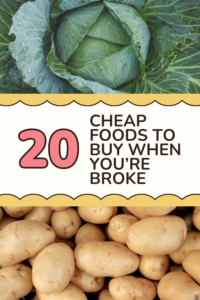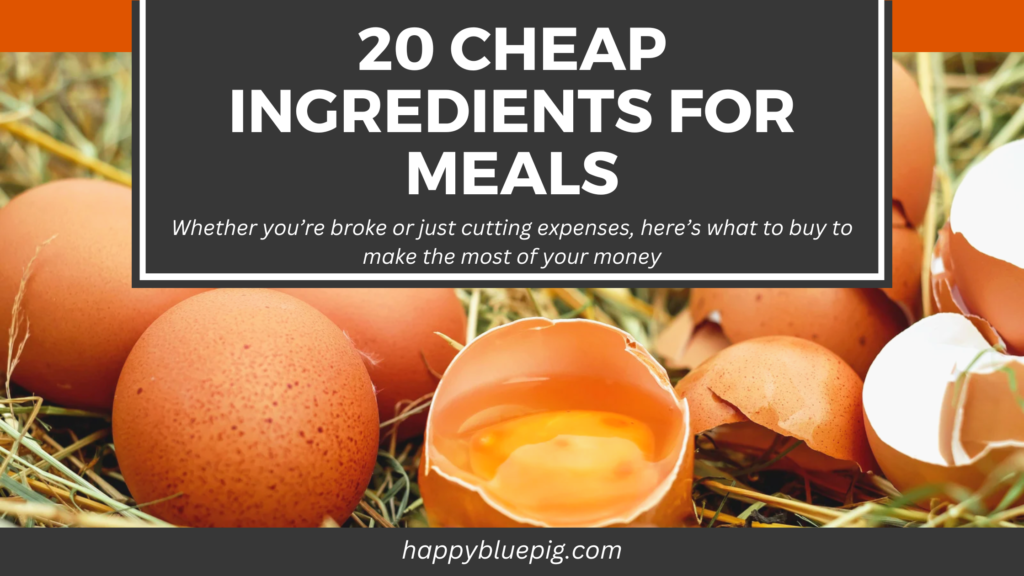Sometimes, it’s hard to make ends meet. Some expenses can be cut, but you still need to eat! If you have children, making sure you can still put food on the table is even more important. Making homemade meals is a good way to save money, as it is nearly always cheaper than premade food and definitely cheaper than takeout. If that’s not good enough, here’s a list of cheap ingredients for homemade meals.
This post may contain affiliate links, which means I’ll receive a commission if you purchase through my links, at no extra cost to you. Please read full disclosure for more information.
Check Salvage Grocery Stores First
If you are near a salvage grocery store, this should be your first grocery stop. Salvage grocery stores are much cheaper than regular store prices, often 50% less or more. I know that holds true at the salvage grocery store near me. I get as much as I can at a salvage grocery store, and plan meals around what I can get there. For anything I can’t find at the salvage grocery store, I’ll go to a regular grocery store and try to get the best prices with coupons, generics, and purchasing in bulk. Click here to find out more about salvage grocery stores and if there is one near you.
Cheap Ingredients
Dried bulk beans
Purchasing dried beans in bulk is usually very low cost. It does take a bit of prep, but it’s very simple. Dried beans just need to be soaked in water 12-48 hours before cooking. All types of beans (black beans, kidney beans, navy beans, pinto beans, etc) are good sources of protein, complex carbohydrates, and fiber. Beans contain between 21 to 25% protein by weight and they are also a good source of iron, per the Bean Institute, which make dried beans a great low-cost alternative to meat.
You can enjoy beans on their own, or with rice, but there’s a lot more you can do with them. Beans can be used as a supplement to meat to stretch out your grocery budget or as a meat substitute. Try substituting beans for meat in recipes such as chili, tacos, soups and stews, or even make some black bean burgers.
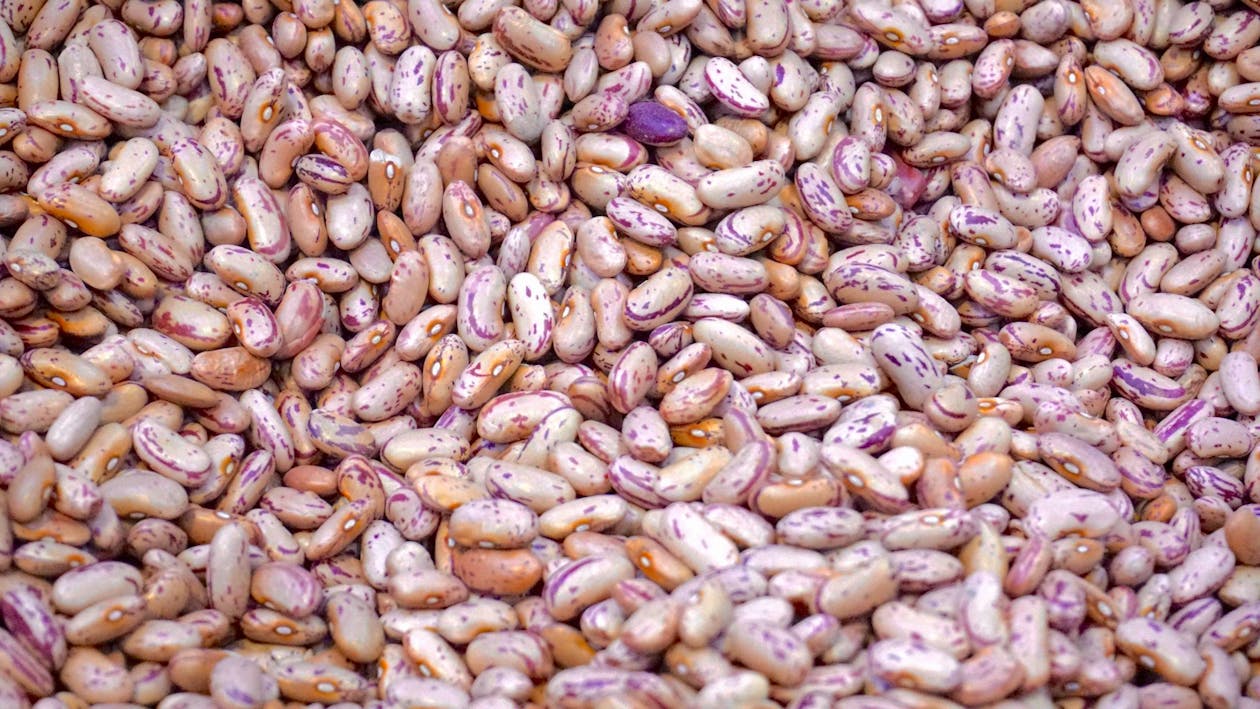
Lentils
Lentils are similar to beans, and are often used interchangeable by many people. While lentils have similar nutritional benefits to beans, they have more protein and folate than all beans except for soybeans. Lentils tend to be a bit smaller and mushier than beans. They are also a bit easier to digest for those who become gassy when eating too many beans.
Lentils can be eaten as a lentil salad, with nuts, herbs, or a variety of vegetables. Lentils are also commonly used in soups. You can also add lentils to rice bowls, casseroles or pasta to add protein and flavor. Dal is also a lentil dish, which is very flavorful and protein-packed.
Rice
Rice is a perfect food when you are strapped for cash. It is filling and versatile, and it also can be frozen if prep time is an issue for you. Buying brown rice instead of white rice can also allow you to get more nutrition out of your food. Brown rice is a whole grain, as opposed to white rice which is processed. It takes longer to cook brown rice, but brown rice is better for blood sugar and heart health. That is because brown rice is higher in fiber, vitamins, minerals and protein than white rice.
When cooking rice, you should be aware that most rice today contains some level of arsenic. Arsenic can remain in your body a long time and does have negative health effects. The good news is that arsenic is water soluble, and by changing the way you cook rice, you can remove 50% or more of the arsenic. Instead of cooking your rice as instructed on the package (1 cup rice and 2 cups water), cook your rice in excess boiling water just like you would your pasta. Once cooked, drain off the extra water.
While writing this article, I also learned a new way to cook rice and reduce arsenic levels – parboiling! I’ll be trying it next time I cook rice. To parboil rice, cook rice 5 minutes in excess water. Then drain the water and add new water, then cook until done. To learn more, check out Food Revolution’s article here.
Canned chicken
I like to can my own chicken using my pressure canner. From time to time, chicken can be found at my local salvage grocery store for a good price, so I stock up. I can it to save fridge/freezer space. Maybe you’ve never done any canning before, and that’s OK; chicken is the easiest food that I can. If you are interested in learning how to do that, click here.
If you don’t own a pressure canner, or don’t have time to can your own chicken, that’s OK. Store-bought canned chicken is fairly cheap. It’s also a quick and easy way to add protein and iron to your diet. Chicken breast is $2.67/lb right now at my local Walmart, thighs cost $3.48/lb. Canned chicken is $2.79 per pound, but you don’t have to cook or prepare it at all before using it.
Canned chicken is a healthy choice, as it’s a good source of protein without all the added ingredients of many prepackaged options. Just keep an eye on the sodium content, and try to pick a low or no sodium option if you’ll be eating it regularly.
Canned chicken can be eaten straight from the can, plain or as a topper for crackers or salads. It also is a quick way to throw together a casserole or pasta dish.
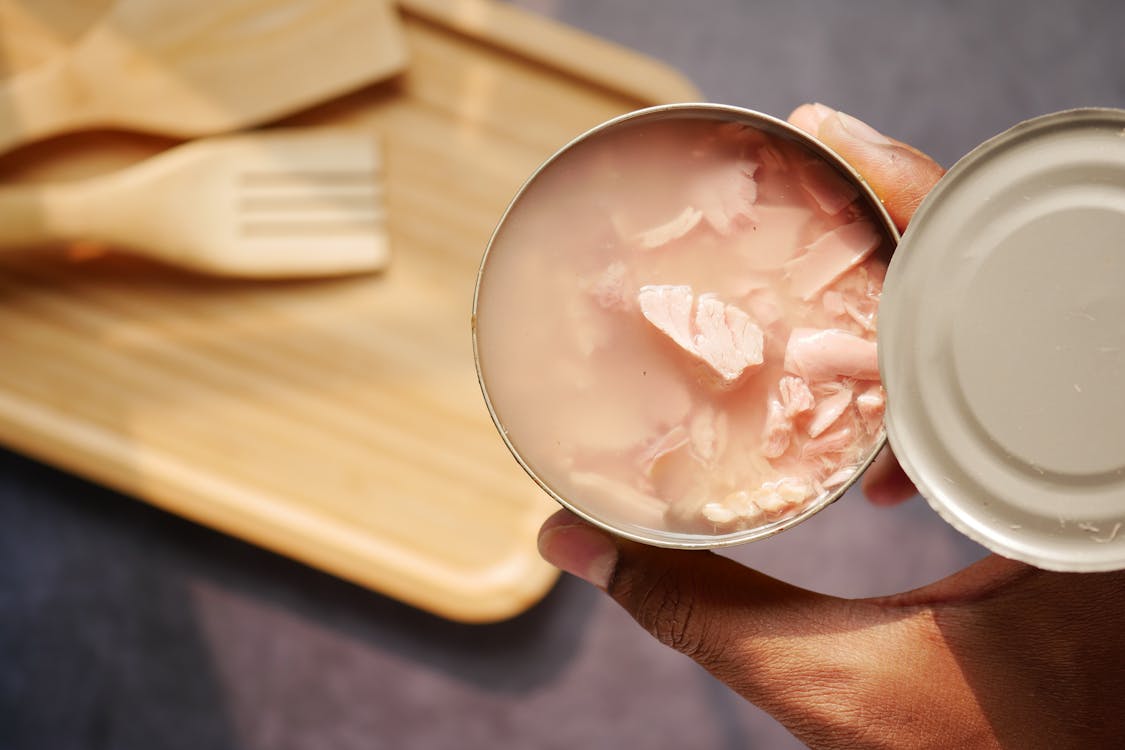
Canned tuna
Canned tuna is another good open-and-go source of protein. Right now I can get tuna for slightly cheaper per pound than canned chicken at the store. Like other kinds of fish, tuna contains omega-3 fatty acid and B12, so it’s good for heart health and vision. It’s also a lean meat, that keeps you full longer.
Canned tuna contains less mercury than fresh tuna, but if you are pregnant or have small children you may still need to limit your tuna consumption.
Canned tuna is already cooked and can be eaten straight from the can. It is also good in casseroles, tuna salad sandwiches, tuna melts, or as a salad topping.
Eggs
Eggs are quick to prepare, and can also be made ahead and frozen for a quick egg sandwich or breakfast egg muffin cup. You can also freeze raw eggs. That allows you to stock up when you can find a good price.
Dandelion greens

Acorns
To cook acorns, remove the shell and boil them until the water turns brown. Strain the acorns, and boil in new water. Repeat the process of boiling in new water until the water remains clear and doesn’t turn brown. Acorns can be eaten roasted, or they can also be made into flour. Acorn flour is coarse, similar to almond flour, and has a nutty flavor.
Dried soup mix
Bacon ends and pieces

Turkey or pork neck
White flour
There’s a lot you can do with flour. If you have the time, you can even make your own bread and pasta. If you don’t feel up to making noodles, here in PA Dutch country we use rivels in our soup. A rivel is just flour, salt and egg mixed together and dropped in clumps into boiling soup. It’s similar to a noodle, but super easy. You can do this with a cream based or a broth based soup.
Flour can help you thicken a gravy or make your own tortillas. Personally, I think homemade tortillas taste so much better anyway, and they are very cheap to make. You can also coat a piece of chicken or fish with flour and seasonings and pan fry it for a tasty supper.
Bananas

Potatoes
Potatoes are filling, and you can buy a 10 pound bag for $6 in my area. There’s a lot you can do with potatoes: casseroles, baked potatoes, mashed potatoes, french fries, potato cakes, soups, and more.
Sometimes potatoes get a bad rap, as they are high in carbs. However, they are a vegetable and can be good for you. As long as you eat the peel with the potato, they contain vitamin C, potassium, vitamin B6, and fiber. Believe it or not, potatoes also contain protein. And since they are relatively high calorie, potatoes are a good food when you can’t afford to buy much at the grocery store.
Onions
Cabbage
Cabbage is another fairly cheap vegetable. It provides a lot of nutrients, including vitamin C and vitamin K. Eating cabbage as sauerkraut also gives you probiotics, as the cabbage has been fermented. If you like, you can even learn to make your own sauerkraut at home. The only ingredients you need are cabbage and salt.
If you are not used to cooking with cabbage, there is actually a lot you can make with cabbage. You could add cabbage to fried rice. Try a vegetable soup with cabbage. Cabbage can be eaten raw, in my family they like to spread a bit of mayo on it. You can also use cabbage for a cabbage salad or cabbage slaw. Another way we enjoy cabbage is thinly sliced and fried in butter or lard.
Frozen or dried peas
Frozen peas or dried split peas are another affordable vegetable when you are broke. Aside of simply enjoying peas plain or with a bit of butter, they can also add flavor and color to a number of other dishes. Add peas to rice or a stir fry. Peas are great in soup or casseroles.
Peas contain vitamin C, vitamin K, vitamin A, potassium, iron, magnesium, manganese, zinc, folate, and B-vitamins. On top of all that, peas are also a good source of fiber and protein. That means they are another filling food when your cupboards are nearly empty.
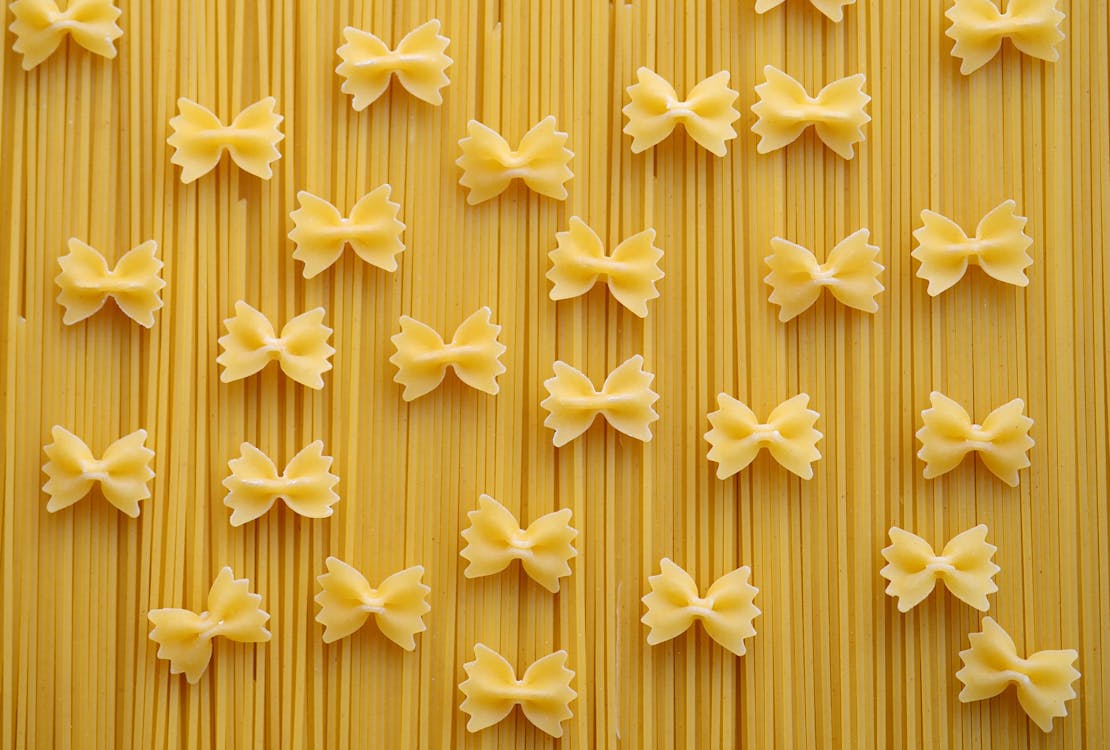
Pasta
Pasta is cheap to buy, lasts a long time, and is quick and easy to prepare. You don’t have to add much to pasta to have a delicious meal. In fact, pasta and caramelized onions are great together. Use different sauces, vegetables or meats for variety. A little pasta added to soup can also make your soup more filling.
Oats
Oats, and sometimes even oatmeal, are low cost foods. Homemade granola, oatmeal, and baked oatmeal are great options for a filling breakfast or even a snack. Oats can be used to make cookies and muffins, or even ground with a blender or food processor to make a coarse flour.
Whether you are struggling to make ends meet or just trying to trim your grocery budget, I hope this list helps you. If you have any other tips for cheap meals or ingredients, please help out by sharing them in the comments!
